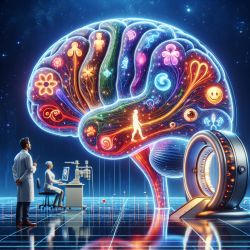Introduction
Autism Spectrum Disorder (ASD) is a complex neurodevelopmental condition characterized by challenges in social interaction, communication, and a range of behavioral patterns. Early identification and intervention are critical for improving outcomes for children with ASD. The research article "From early markers to neuro-developmental mechanisms of autism" provides valuable insights into the early markers of autism and their implications for intervention strategies.
Understanding Early Markers
The study emphasizes the importance of identifying early behavioral and brain markers that differentiate infants who develop autism from those who do not. These markers are observable within the first year of life, offering a window for early intervention. Key findings suggest that atypical development in sensory and attentional systems, rather than solely social deficits, may contribute to autism pathology.
Implications for Practitioners
Practitioners in speech-language pathology and related fields can leverage these findings to enhance their intervention strategies. Here are several ways to implement the research outcomes:
- Focus on Sensory Processing: Incorporate sensory integration techniques to address atypical sensory reactivity, which is prevalent in children with autism. Tailoring interventions to improve sensory processing can aid in better social and communicative outcomes.
- Enhance Attentional Control: Develop programs that target attentional control, as difficulties in attention shifting are evident in infants who later develop autism. Techniques that promote cognitive flexibility and sustained attention can be beneficial.
- Utilize Early Behavioral Markers: Implement screening tools that identify early behavioral markers such as gaze following and joint attention. Early detection allows for timely intervention, potentially mitigating the severity of autism symptoms.
Encouraging Further Research
The study highlights the need for continued research into the neurodevelopmental mechanisms of autism. Practitioners are encouraged to engage in or support research efforts that explore:
- Longitudinal Studies: Conduct longitudinal studies to track developmental trajectories and the impact of early interventions over time.
- Neurobiological Underpinnings: Investigate the neurobiological factors contributing to autism, including brain-wide neural impairments and connectivity issues.
- Innovative Intervention Models: Develop and test new intervention models that incorporate findings from neurodevelopmental research, focusing on personalized and targeted approaches.
Conclusion
By integrating the insights from this research, practitioners can refine their approaches to autism intervention, ultimately leading to improved outcomes for children. The focus on early markers and neurodevelopmental mechanisms provides a robust framework for developing effective strategies tailored to the unique needs of each child.
To read the original research paper, please follow this link: From early markers to neuro-developmental mechanisms of autism.










